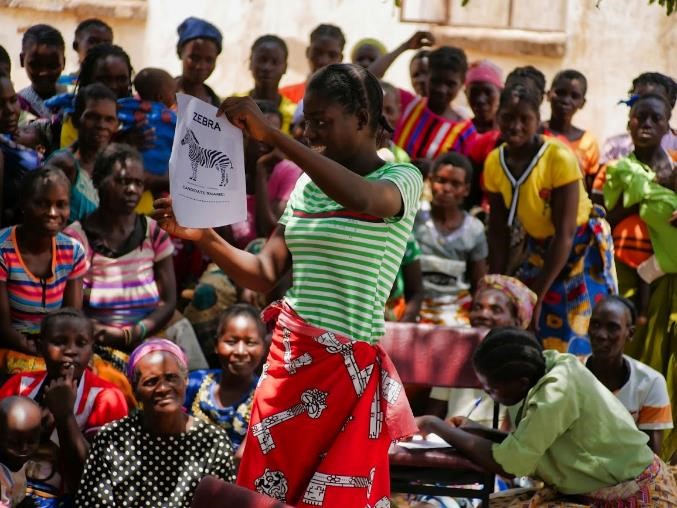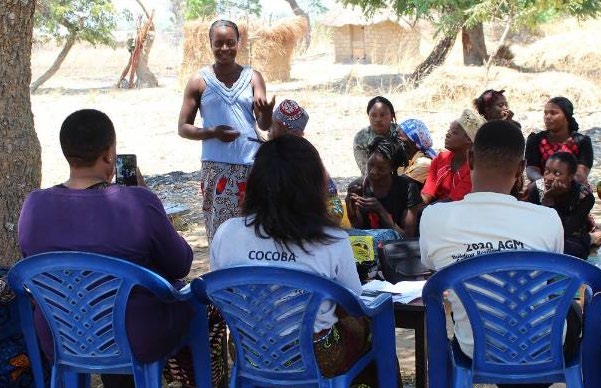 Wildlife conservation and natural resource management are critical areas for economic development in Zambia, yet women still have limited opportunities for participation in community-level governance. In October 2020, the United States Agency for International Development-funded Integrated Land and Resource Governance (ILRG) program led a pilot initiative to empower women during the elections for community resources board (CRB) positions in four chiefdoms (Mukungule, Nabwalya, Chikwa, and Chifunda) around North Luangwa National Park, in partnership with the Department of National Parks and Wildlife (DNPW), Frankfurt Zoological Society (FZS), and the Zambia Community Resources Board Association (ZCRBA). The objective was to increase the number of women participating in CRB elections, with the ultimate goal of drawing lessons learned and best practices to promote greater gender equality in policies and programs related to community natural resource governance in Zambia. This brief summarizes the strategies used to empower women, the results, and the challenges and opportunities for scaling up gender-responsive approaches to community resource governance.
Wildlife conservation and natural resource management are critical areas for economic development in Zambia, yet women still have limited opportunities for participation in community-level governance. In October 2020, the United States Agency for International Development-funded Integrated Land and Resource Governance (ILRG) program led a pilot initiative to empower women during the elections for community resources board (CRB) positions in four chiefdoms (Mukungule, Nabwalya, Chikwa, and Chifunda) around North Luangwa National Park, in partnership with the Department of National Parks and Wildlife (DNPW), Frankfurt Zoological Society (FZS), and the Zambia Community Resources Board Association (ZCRBA). The objective was to increase the number of women participating in CRB elections, with the ultimate goal of drawing lessons learned and best practices to promote greater gender equality in policies and programs related to community natural resource governance in Zambia. This brief summarizes the strategies used to empower women, the results, and the challenges and opportunities for scaling up gender-responsive approaches to community resource governance.
Background
Barriers and Opportunities for Women’s Participation
Research shows that women and men have distinct social roles and responsibilities both at community and household levels regarding their access to and control of natural resources. Men and women have unique knowledge about natural resources and they use resources differently. Women frequently do not equally share in the economic benefits derived from natural resources, and resource depletion often impacts them disproportionately. Women face several barriers to participation in natural resource governance. Rules that govern community resource groups often explicitly or implicitly exclude women’s meaningful participation. Social and cultural norms that associate public engagement with men also discourage women’s participation. Women have competing priorities due to their disproportionate responsibilities for unpaid care work, such as child care, household tasks, and elder care. Finally, lack of support from spouses and extended family, as well as women’s lack of information and confidence, are also deterrent factors.
Evidence from several countries shows that inclusion of women in natural resource governance has significant positive effects on conservation and development outcomes. A comparative study in East Africa and Latin America found the presence of women in community forest governance structures to enhance responsible behavior and forest sustainability (Mwangi et al., 2011). In Asia, increasing women’s representation in community forest governance institutions improved resource conservation and forest regeneration (Agarwal, 2009). The benefits of women’s participation were linked to their indigenous knowledge of the forest, preference for collaborative relationships, and greater compliance and adoption of sustainable practices. Increased participation in natural resource governance can be a pathway for wider empowerment of women in the household and in the public sphere, also leading to opportunities for growth in families’ income from economic activities related to natural resources. In addition, private companies in value chains related to natural resources are more likely to certify products and practices if women have active participation in resource governance (Beaujon Marin & Kuriakose, 2017).
Women’s Participation in Community Resource Governance in Zambia

Women’s participation in community resource governance in Zambia remains significantly low. The legal and policy framework, including the 2015 Wildlife Act No. 14 and the 2018 National Parks and Wildlife Policy, promotes devolution approaches and community involvement in the management and conservation of natural resources. It also supports gender equality and social inclusion in wildlife conservation, so that women, men, and youth have equal opportunities and benefit equally, with the goal of reducing inequities in conservation. However, progress in policies have not been reflected in community governance in the sector. Programs and strategies have failed to adopt gender-responsive approaches and consider the unique concerns, needs, and knowledge of women and men.
CRBs are an important structure for devolved power to communities in the management of wildlife with Zambia’s chiefdoms and are an important entry point for participation in wildlife and natural resource management. Gender equality remains extremely low and the 77 CRBs across the country have less than 10 percent women representation; only 3 percent of CRBs have ever had a woman in a leadership position. The few women that participate in CRBs experienced challenges in asserting themselves within these male-dominated structures. Although the legal and policy framework calls for gender equality in community governance structures, the actual lack of women’s representation and decision-making power is often ignored, undermining the ideals of community participation and the effectiveness of conservation efforts.

